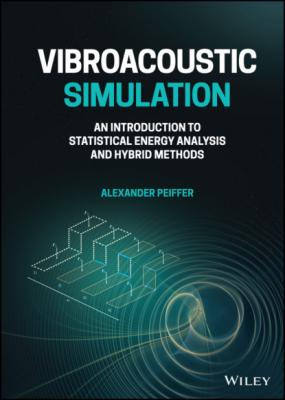Vibroacoustic Simulation. Alexander Peiffer
Чтение книги онлайн.
Читать онлайн книгу Vibroacoustic Simulation - Alexander Peiffer страница 20
 F Subscript y i EndBinomialOrMatrix"/> (1.93)
F Subscript y i EndBinomialOrMatrix"/> (1.93)
The local matrices must by assembled for all degrees of freedom, so the system from Figure 1.17 will have the follwing mass matrix:
1.4.2 Assembling the Stiffness Matrix
A similar procedure is applied to the springs and the related stiffness matrix. Every spring ki connects different points in space, so there are at least two nodes involved, unless the spring is connected to a rigid wall. Inspecting the spring in Figure 1.18 the force balance is:
Figure 1.18 Spring and damper connection of two nodes. Source: Alexander Peiffer.
Springs connected to rigid walls are treated differently. In that case the DOF at the wall is constrained. Here for example u1=0, and we get for Equation (1.95)
If the spring is connected to the wall, only u2 changes with applied forces, and the reaction force in the constraint is −ksu2. Practically that is the reaction force that must be provided by the wall to keep the node in place. In the finite element terminology these constraints are called single point constraints (SPC).
The local matrices must be distributed among the global stiffness matrix [K]. For better visibility this is done for springs 2 and 4. The place of the local matrix of spring 2 in the global stiffness matrix follows from the u1 and u2, the position of spring 4 from v1 and v3.
For the system from Figure 1.17 and putting all free and constraint springs together we get: